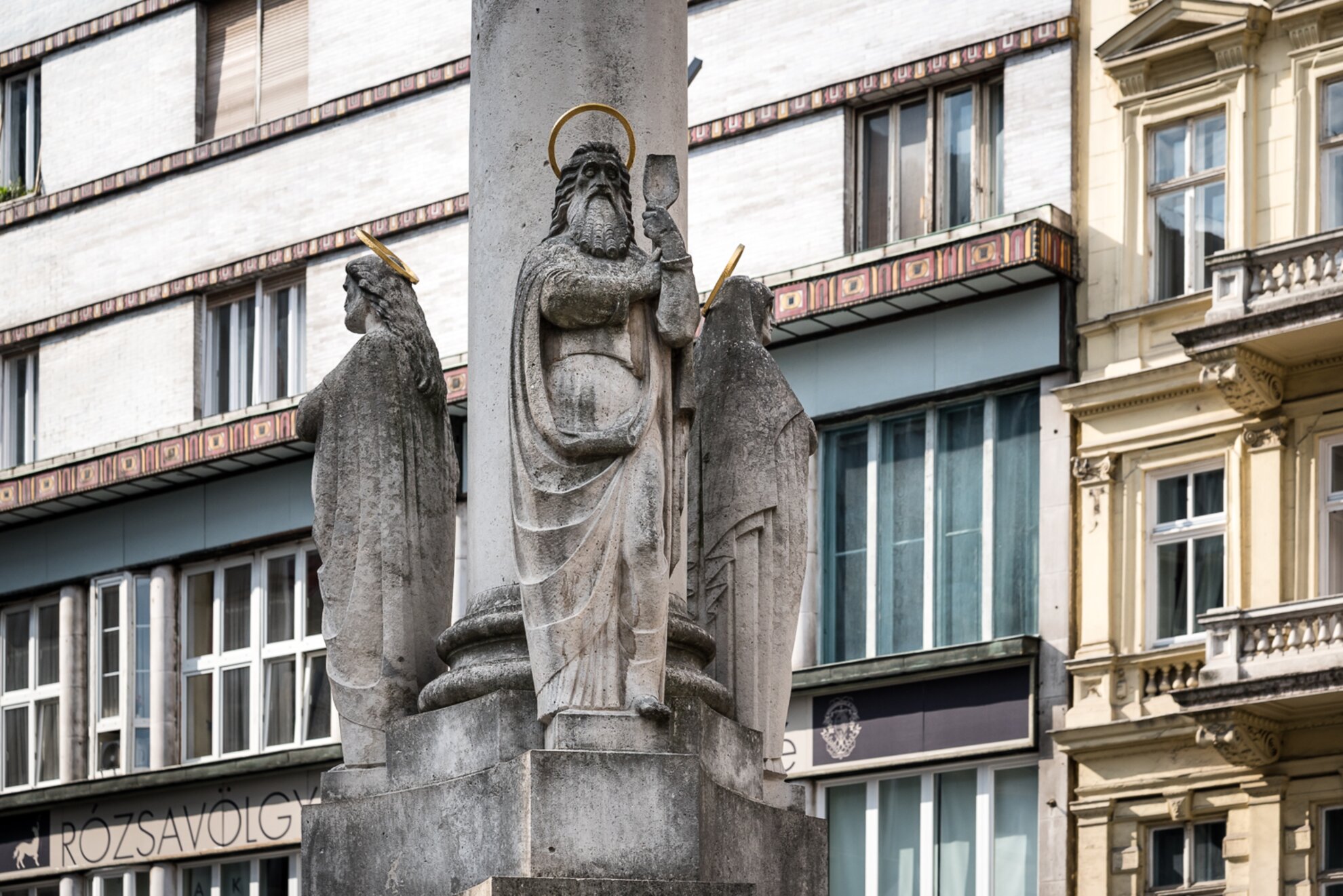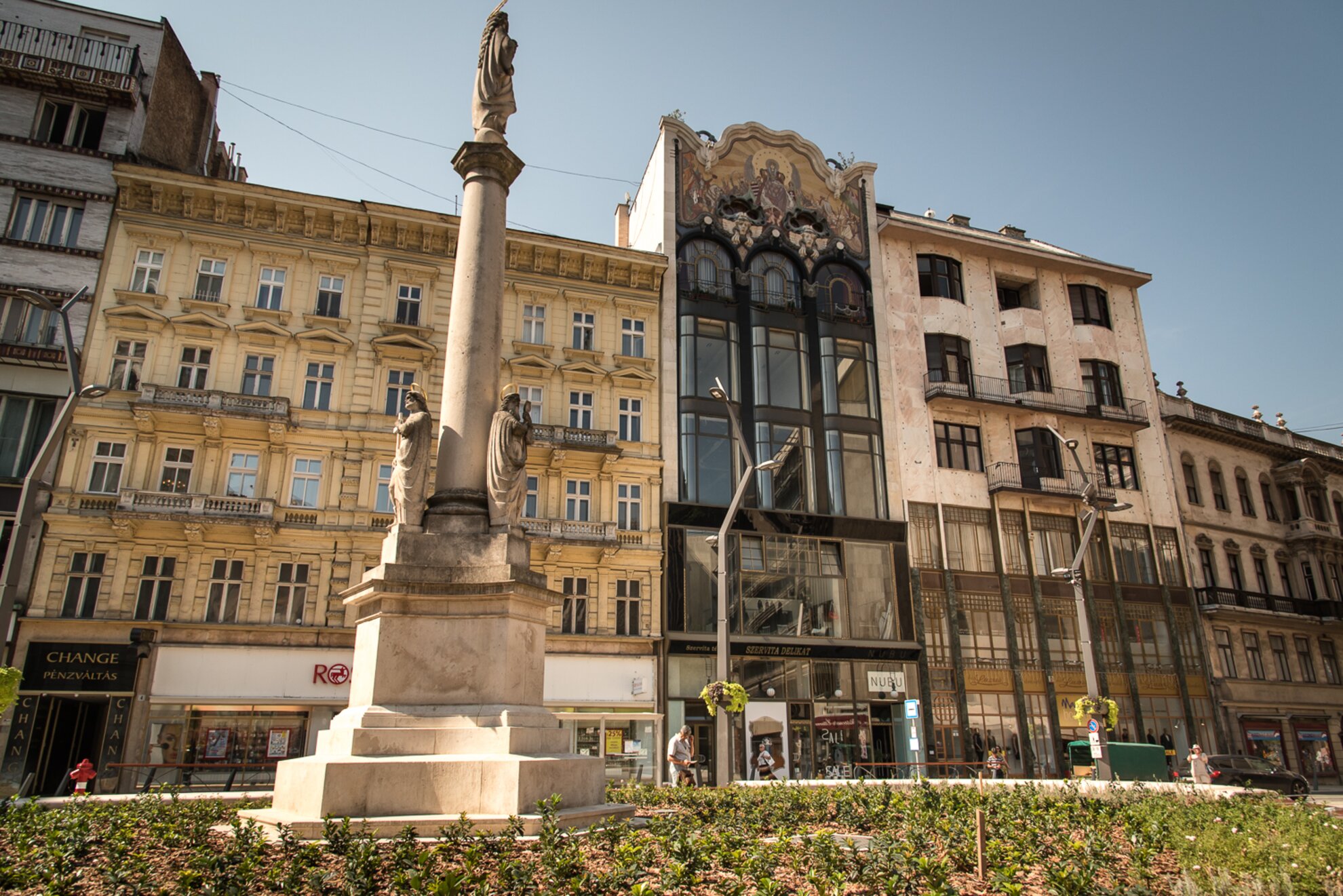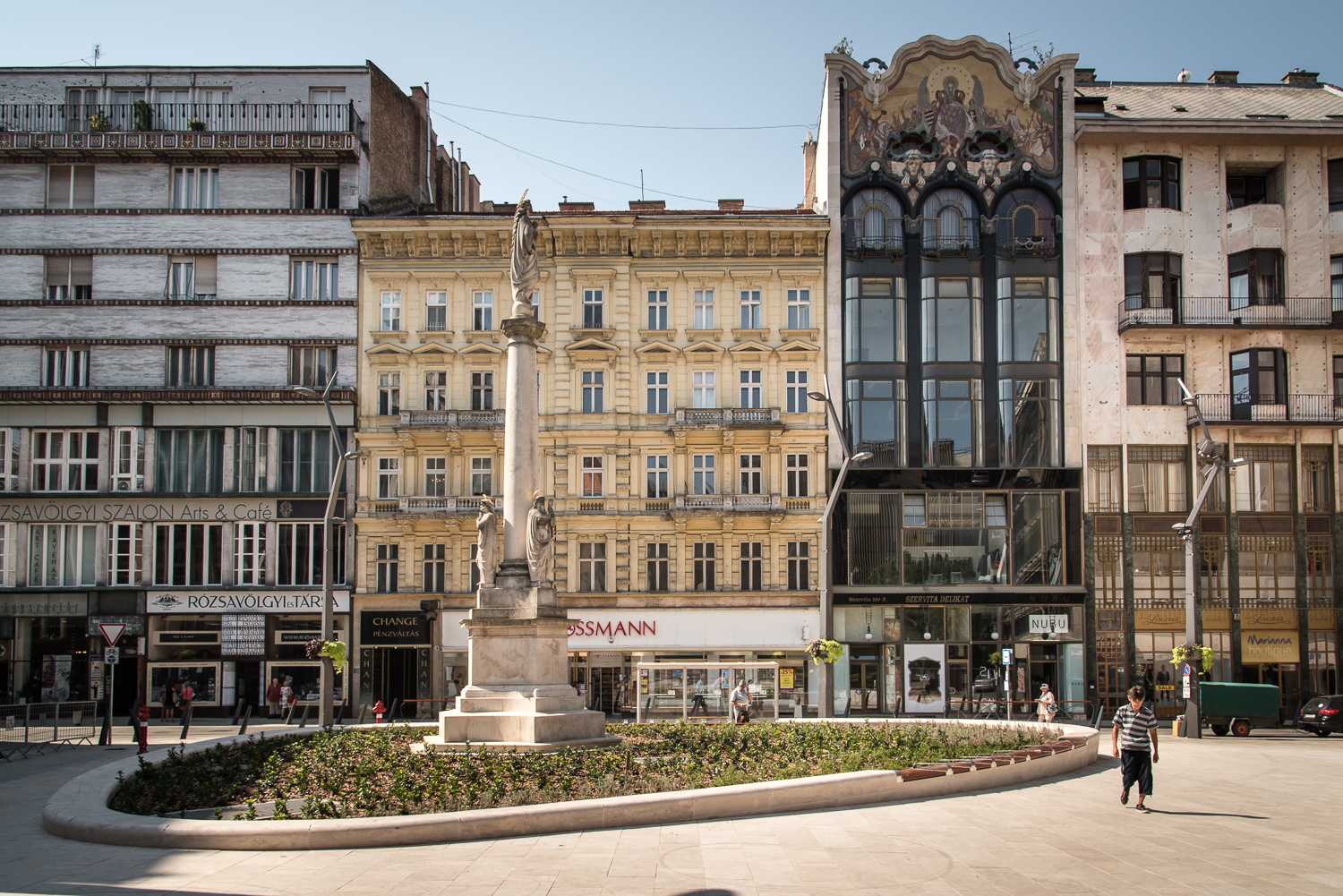Located just a few steps away from downtown Pest’s bustling transport hub of Deák Square, another plaza was neglected for decades and relegated to serving as a crowded parking lot. However, after a recently completed renovation, Szervita Square is now a green oasis surrounding the ornate Mária Column, creating a stately open space that befits the majestic buildings that surround it (and even some nearby eyesores that may soon be demolished), with benches and healthy plants now comprising the primary elements of this urban landscape.
Szervita Square – previously called Martellini Square – could be one of the most atmospheric squares in the downtown area, surrounded by such stunning edifices as Béla Lajtai’s Rózsavölgyi House; the fancy, French-styled Art Nouveau building of the Turkish Bank House, designed by Henrik Böhm and Ármin Hegedűs; and a recently renovated Baroque church, towering over the square as elegantly as ever.

The name of the square comes from the nearby headquarters of the Servite Order, which commissioned the construction of the church based on the plans of Johann Georg Pauer. The imposing church building was erected between 1725 and 1732.

It’s a mighty shame that the former monastery, which once stood behind (and partly beside) the church, was never rebuilt after it was badly damaged during World War II. By 1976, the demolition of the monastery had made room for the Downtown Telephone Exchange Center, built in line with the ideas of Lajos Jeney and Ferenc Bán.

A massive and derelict office building, which has stood empty for some years now, and the adjacent multistory car park, which is currently in use (despite appearances to the contrary), are two of the main elements dominating the atmosphere of the square. Built in 1973 based on the plans of István Szabó, the buildings were set to be replaced by a glass bubble, very much in line with the signature style of Iraqi-British architect Zaha Hadid – and had it been erected, the unusual monument could have become one of Budapest’s symbolic modern buildings.

The square’s centrepiece, the ten-meter-tall limestone Immaculata Column – also known as the Mária Column – was designed by Erdey Dezső, and has been the focal point of the plaza since 1942.

Set in these refined surroundings, Szervita Square has basically served as a neglected downtown parking lot, whose potential has been overlooked for the past couple of decades.

With some of the necessary funds provided by the Budapest Mayor’s Office and the Government of Belváros-Lipótváros, the restoration of Szervita Square has been carried out in the framework of the TÉR-KÖZ urban-rehabilitation tender. As the project is a sort of continuation of a series of recent urban development initiatives in the capital, s73 Stúdió, the firm responsible for the square’s new design, worked out the details to blend nicely with what has already been achieved on nearby Petőfi Sándor Street. The architecture firm, with a long portfolio including countless projects to revamp public spaces, parks, and gardens, has kept this continuity in mind when choosing the square’s natural stone surfaces and coming up with the design of its street furniture.

The square is now fully accessible, the parking spots around the central column are gone, and new traffic regulations are in effect – these are the most notable changes in this rejuvenated area of town.

To strengthen the community-building function of the space, the architects tasked with reinventing the public square have opted for benches with 24 seats, and filled the flowerbeds with fragrantly blooming flora and short, drought-resistant bushes.

The foundations have been designed to be able to support the heavy weight of demolition machinery, should the nearby office building be renovated or pulled down in the future – however, learning from the wasteful mistakes made during the renovation of Király Street, if the demolition plans go ahead, it would probably be a good idea to temporarily remove the decorative stone paving to preserve their condition during the work.

Music is a main theme of the renewal program here thanks to the proximity of the acoustically exquisite church and the Rózsavölgyi Music Store. Szomory Dezső Square will host jazz concerts, while Szervita Square will turn into a classical-music venue.

As renovation projects all over downtown are being completed, including the beautification of Szervita Square, the heart of Budapest is slowly becoming fully transformed. We hope that the fate of the outdated office building will soon be resolved, so that the third side of the square can also be renovated. If the trend continues, the next public spaces we would like to see revamped are small squares like the charming Kamermayer Károly Square, the home of the city’s iconic Gerlóczy Café.




